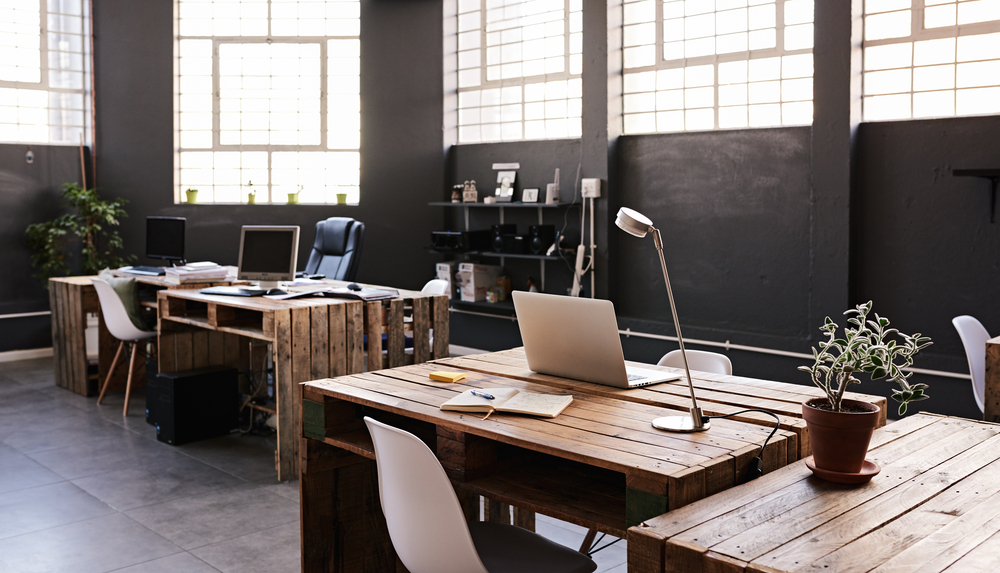Your productivity is influenced by your surroundings. Here’s how to make your desk more productive so you can work more effectively.
The heart and soul of any organization is productivity. The layout and environment of your office may have an impact on how productive your staff members are. Additionally, consider the arrangement of your office’s furniture and equipment, the movement between work areas, and the atmosphere in general.
Fortunately, there are tools available to increase productivity in your company and create an environment where employees desire to work. For hints and recommendations on how to do it, keep reading.
1. Don’t get too caught up in the actual layout.
Physical space is vital, no doubt, but it’s equally important to create a productive environment at work. This entails igniting enthusiasm for your company’s mission and emphasising to staff members how crucial they are to realising those objectives.
Company culture, in my opinion, is the first step in making your office more effective, according to Raven Beria, CEO of the brand consulting agency Brandalaxy. If your company’s beliefs or mission aren’t clear, it doesn’t matter what kind of technology or office design you have.
According to Beria, this is so since your company’s culture serves as its cornerstone. “By concentrating on precisely establishing your corporate culture, you establish the standards for conduct. In conclusion, mentality, communication, and cultural alignment are the foundations of efficiency.
A strong organisational culture that recognises and rewards effort and fosters employee buy-in is the foundation for efficiency and productivity, according to Simon Hansen, creator and blogger at Best Sports Lounge.
“An office is not merely its physical location. Companies must recognise achievement, provide flexible scheduling, and support their most valuable assets: their staff, according to Hansen.
However, there are situations when an office’s design really does matter. Her Space’s owner and founder Kayla Pendleton is aware of this and has incorporated it into the physical layout of her sites.
As the founder of a coworking community, Pendleton stated that it was crucial to design shared spaces that incorporated the greatest elements of flexible workspaces to foster community while also enhancing members’ productivity. “I’ve discovered that if you have open offices or communal places, you must also have meeting rooms where people can have seclusion for focused work or phone calls.”
Your office’s layout and style will also rely on the kind of business you run.
“An unsatisfactory work environment might result from a distracting or uncomfortable work environment. Kenny Trinh, managing editor of NetBookNews, remarked that when something makes you unpleasant, you are just not as productive or engaged as you may be. For instance, while an open office plan encourages employee connection, it can also be difficult for workers to concentrate on their tasks due to noise and visual distractions.
There is no “best” or “ideal” workplace arrangement, according to Trinh, but as long as your employees’ needs are put first, you’re doing it right.
2. Provide chances for movement.
Jamie Fertsch, director and co-founder of Xdesk, a U.S.-based company that makes specialised, ergonomic desks out of environmentally friendly materials, said, “The best way that I stay focused during a long day of work is to acknowledge when I’ve hit a productivity wall and to take lots of short, quick breaks to gain a new perspective on what I’m working on.”
You can incorporate additional possibilities for movement into your workstation in addition to Fertsch’s company’s stand-to-sit desk, which promotes shifting positions and moving frequently throughout the workday. There are many reasons to stand up and move around, like having the phone and copy machine on the other side of the room from the computer and a central water cooler.
Fertsch continued, “Productivity is not directly connected with time spent on a task. “It’s crucial to make sure you’re periodically recharging and recalibrating.”
Giving your staff the option to work from home or set up flexible schedules, if your company permits it, could also count as part of encouraging exercise.
Sean Hayes, head of technology at Hausera, advised companies to “[consider] a workspace that doesn’t constrain employees to one spot and provides them the opportunity to work remotely, sit outside, etc.”
Purchase a plant.
I kid you not! A variety of plants can be used for more than just aesthetic social media posts. They are quite useful in offices as well.
Fertsch stated, “I prefer to make my place feel a little more alive. Although she acknowledged that using houseplants is not a common way to create a productive office, this does not imply that they have no impact.
According to Léon & George co-founder Ron Radu, plants can foster an environment that promotes more productivity.
Numerous plants around the office contribute to cleaner air production and inspire staff to be more enthusiastic and inventive, according to Radu. “Scientific research has demonstrated the benefits of adding more greenery to offices. Plants have a tonne of benefits, from lowering stress to enhancing productivity and creativity.
4. Provide a place for electronics.
While smartphones, tablets, and other technology can keep you focused and productive, they can also be a major time-waster and source of distraction. Finding a place for electronics and leaving them there, in Fertsch’s opinion, is the greatest approach to prevent this time being spent.
Create a “home” for your smartphone, smartwatch, and other potentially distracting devices because there are so many screens competing for our attention these days, advised Fertsch. Keep them in a designated location while working to avoid being interrupted by a constant barrage of notifications.
Put your electronics in a drawer for safekeeping. Beyond sight, beyond memory
5. Keep your area tidy.
You’re probably not working very hard if you’re sitting in a messy place contemplating how messy your space is and how you should clean it.
Fertsch advised, “Take a few minutes each day to organise your desk.” To prevent additional distractions and clutter, you can achieve this by getting rid of needless objects and keeping whatever organisational system works best for you.
Fertsch organises her to-do list in addition to cleaning or organising her workstation each day to avoid wasting time at the start of her job. She sits down at the end of the day and lists the tasks she needs to complete the following day.
In order to create outstanding work tomorrow, Fertsch said, “this helps me think on what I accomplished for the day and how I can move forward.”
The founder and CEO of ContentMender, Ron Lieback, advised treating your desk like a brand-new document on which you are ready to create a blog post or email.
“Your mind may actually concentrate better when a document is blank. Imagine that the page in that document is overloaded with unrelated words and numbers, and you have to write in between them. You won’t be able to focus since your mind will be playing tricks on you. The same holds true for a disorganised workplace.
6. Be intimate.
Personalizing your workspace can improve your emotional connection to your work, but Lieback advises against personal touches turning into clutter. Personalization should only be done in moderation.
Although you shouldn’t occupy important desk space with objects you don’t usually use, Fertsch said, “I still prefer to customise my workplace to appeal to my visual side.”
She maintains a personal desktop calendar in addition to a plant that increases productivity, which aids her in staying on task during the workweek.
She advises selecting personal items that motivate you to be effective.
On my desk, I prefer to have a framed picture of my children. They are the ones who consistently inspire me throughout the day.
There is no strategy to workplace layouts, design, or functioning that works for everyone because no two employees are the same. Employees will want to be more productive, and it will help them be more successful in achieving that goal, if you give them the freedom to not spend the entire workday in the office, allow them to have some plants and personal touches, and give them space to breathe, be creative, and express themselves.







